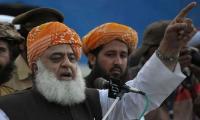On August 23, the US imposed tariffs worth $16 billion on Chinese imports. On the same day, Beijing paid Washington back in the same coin by racking up tariffs on an equal value of American goods. To date, each country has slapped tariffs amounting to $53 billion on each other’s imports. In the months to come, more such retaliatory measures are on the horizon. Why are the globe’s two largest economies and trading nations engaged in an apparently zero-sum game?
One way to answer the question is to put all the blame on Donald Trump. Since his inauguration, the maverick US president has been on a warpath, both at home and abroad, without even beginning to understand the ramifications of such (mis)adventures. The trade war that he has unleashed targets both friends (the EU) and foes (China), and has no purpose. If anything, it bears the stamp of a morbid mind.
This is a very simple explanation and looks plausible on the face of it. However, like every other explanation that sets down a nation’s policies on the whims of its top leadership without taking into account the external forces at work, it is shallow. To appreciate the raison d’être of the trade war, we need to go beyond Trump’s psychoanalysis and take into account international power dynamics.
The last two decades have seen a gradual reduction in the economic strength of the US and an upsurge in that of China. Between 1997 and 2017, the US economy registered a modest average annual growth of 2.3 percent to reach the size of $19.4 trillion from $8.6 trillion. Meanwhile, the Chinese economy has grown on an average of 9.1 percent a year to reach $12.2 trillion from $961 billion. China has also overtaken the US as the world’s top exporter.
It is widely believed that at the current growth rates, China will overtake the US as the world’s largest economy in the next two decades. Although Washington will militarily remain well ahead of Beijing, a redistribution of economic power will act heavily on each nation’s capability to shape international events.
A dominant state that is losing ground to another has the option to either resign to its inevitable decline – just as the UK did in the early decades of the 20th century with regard to the US – or take up the cudgels and make strategic moves to safeguard its predominant position. As a rule, the longer the dominant state (in this case the US) dillydallies on taking decisive action, the more ground the challenger will gain and the slimmer the chances of the former’s victory will become. However, hitting back may hasten the dominant state’s decline. In either case, it is a risky venture. Former American presidents had also mulled the possibility of slapping tough sanctions on China. Under Trump, Washington has finally come up trumps and thrown its hat into the ring.
Irrespective of its outcome, a trade war is a strategic move, which has economic and political dimensions. A country running a massive trade deficit is more prone to start a trade war than a country that is running a comparable trade surplus. When a country is losing jobs to its trading partners allegedly because of trade imbalances, it is easier to sell a protectionist policy to key domestic constituencies.
No government, least of all a democratically-elected one running a superpower, wishes to be seen as deficient in its will to effectively respond to the ‘unfair’ practices of its trading partners. Not only that, some important non-trade strategic objectives can also be pursued on the presumption that the other side won’t be able to respond in the same manner for long.
With the foregoing in view, it will be easier to understand why Trump embarked on the trade war. The persistently huge trade deficit run by the US, which exceeded $862 billion in 2017, with its adverse impact on job creation, made the start and pursuance of the tariff war on the domestic level a workable proposition for Trump. While running for the White House, he had made no bones about his distrust of free trade as the underlying cause of slow industrial expansion and job creation in the country. Once domestic support was secured, it was easier to take on trading partners.
The trade war started when the US imposed tariffs worth $3 billion on Chinese imports in March 2018. Beijing retaliated by subjecting nearly the same value of American goods to punitive tariffs. Then, in a tit-for-tat move in July, China and the US slapped tariffs worth $34 billion on each other’s imports. Further tariffs worth $16 billion each were levied on August 23. That’s not all. The US is considering imposing additional tariffs worth $200 billion on Chinese imports, which are likely to evoke a similar response from Beijing.
The choice of China in the trade war was obvious for more than one reason. For one thing, China has over the years been the principal source of US trade deficit. In 2017, US trade deficit with China reached $395 billion. For another, with an export-to-GDP ratio of 19.8 percent – compared with the America’s 11.8 percent – China is more dependent on exports than the US and is, therefore, likely to be hurt more in the current trade war. In addition, the economy is the mainspring of Chinese strength – the Asian giant is way behind the US militarily – and the country’s global ambitions, such as the One Belt One Road initiative, are underpinned by its spectacular export performance.
As Washington sees it, by engaging Beijing in an apparently zero-sum game, it will be able to effectively block the latter’s rise to the status of becoming the world’s top economy, and tame the corresponding strategic ambitions. In this high-stakes game, things may go haywire for Americans as well in case, for example, China is able to capture new markets or begin disinvesting their enormous investment in the US, which is the principal source of financing the latter’s fiscal and trade deficits. This is a calculated risk that an economic superpower, which desperate to safeguard its status, can afford to take. At any rate, the cat has been set among the pigeons. We will have to wait to see who blinks first.
The US sees fewer problems in the case of its lesser trading partners. The EU is a house divided against itself. Even otherwise, it banks on the US to underwrite its security. Already, the EU countries, which are part of Nato, are running the gauntlet of Trump’s criticism for allegedly taking the US for a ride in security matters. If the past is any guide, while European nations may show some defiance to Washington, in the end they will toe the latter’s line. They did so when they followed the US in imposing stringent sanctions on Iran in 2010; they are likely to repeat that gesture again.
Bringing Turkey, which has become the latest country to be slapped with punitive import tariffs, to its heels will be even easier for the US. Despite Turkish President Erdogan’s rants and his attempts to impart religious meaning to the tussle with Washington, Ankara is no match for Washington. The Turkish strongman, it seems, is fighting a losing battle.
Trade wars don’t bode well for the world as they depress prices, lower output and shed jobs. The same goes for the current tariff war. But as in the case of any other war to the knife, some nations will pay a higher price than others.
The writer is a freelancecontributor.
Email: hussainhzaidi@gmail.com
The cases of Attabad Lake and Gwadar simply highlight the many tragedies that exist around the country
Reaffirming loyalty to democracy as a problem solver can be a good starting point
Unfortunately, Pakistani films and TV dramas have seldom ventured beyond domestic intrigues and love triangles
A woman walks past a building of the International Monetary Fund. — AFP/FileThe annual and spring meetings of the...
Late Benazir Bhutto's daughter Asifa Bhutto Zardari addresses the Christian community in Bihar Colony on January 23,...







